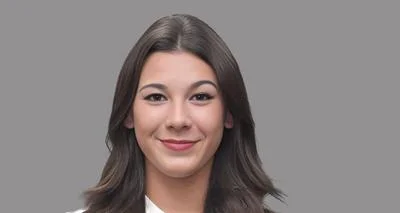Columbia College issued the following announcement on Oct. 9
I live in a small town in central Missouri about three or four blocks away from the Missouri River. I walk my dog down to the Katy Trail nearly every morning and I usually pass a home with numerous plants in the yard. The owner is a master gardener from what the townsfolk tell me. I don’t know much about gardening, but I could tell her daily activities had changed recently. She seemed to be preparing for something; her routine had changed, but it was subtle. It is autumn now, so perhaps she’s preparing for the winter. Missouri can be a bit unforgiving and ambivalent during the cold months. What was the gardener up to? Pruning and preparing her garden for leaner times ahead, I assumed. I noticed the additional weeds and tree limbs she had gathered, the leaves with their change in color accumulating around the yard. A new cycle was upon us and her actions were the bellwether.
Our financial lives have a similar cyclicality, and many times, they are beyond our control. The signs are there. The alleviation of the pandemic hasn’t been as smooth as all of us has hoped. Increased Inflation. The Fed warning that interest rates will be increasing. Debt ceilings and increased deficits are now on the tips of our tongues. Warnings of a financial recession and market crash. Is this any different from the expected rain, snow, ice and cold temperatures coming? We should always expect similar cyclicality in the financial markets. Many economists argue this natural cyclicality has been suppressed for many years. But with cyclicality comes opportunity, if we’re prepared.
The gardener has been at it for numerous seasons now building up her yard. She is not just intuitive with a green thumb but she’s also been trained. I’ve been told hers is a “pollinator garden” and provides not only beauty but livelihood for local insects, birds and animals to thrive. The garden is planted with intention, with plants endemic to the local area. Plants that were intended to thrive there. Not only that but the mix compliments the greater whole; each plant plays a role in relation to the other. I assume that her process is similar every year, pruning, preparing and then planting again in the spring. From my perspective and my dog’s, the garden may appear chaotic but to the red-bellied woodpecker perched in the neighboring oak tree the view may be more systematic, one of order. No Kentucky bluegrass here; no concern about comparing to the Jones’ lush lawn. Her garden, though planted with native plants that will thrive in this climate, is unique to her. She has decided the mix and it is a methodical one.
We should learn a lesson from the master gardener by tending to our own financial garden. What should we do as we prepare for a potential economic winter? Her plant mix is similar to our own portfolio of assets. Stocks, bonds, real estate and land, mutual funds, life insurance policies, savings and checking accounts, business ownership or farm operations, precious metals – how do these assets fit together? Are there correlations between them? If one asset doesn’t perform well is there a matching asset that will? Ideally, we’d want to combine assets with low or no correlation to each other. This provides us a well-diversified portfolio, one that can perform in any environment much like a healthy garden that contains flowers that will bloom at different times of the year.
How do you become the master gardener of your own financial garden? First, look at the whole portfolio and not as one-off, siloed investments. Ask your financial advisor or broker about the correlation between your assets, especially the “traditional” ones like stock and bonds. Many advisors recommend harvesting return and rebalancing your portfolio once a year. Set any established ratios between assets back to equilibrium. If the cornflower has thrived and over taken the aster it needs to be cut back so the other may also thrive. Your Tesla stock has done wonderfully, but that real estate investment trust which pays a solid dividend maybe has not. There’s low correlation between the two and you want them both in your garden but the ratios are off. Time to take some fruit from Tesla (sell some off) and re-establish those ratios. Find the balance; that will get you through the lean times ahead. The diversification will provide that level footing to get you to summer again.
James Dugdale is a visiting instructor of real estate management in the Robert W. Plaster School of Business at Columbia College. He is a licensed real estate broker in the state of Missouri and has held roles in mortgage origination and underwriting, commercial property brokerage, project management, and acquisition coordination for a nationally recognized real estate investment trust. He has also served as principal broker for his own realty and advisory firm. In addition, he has taught real estate courses at MU and other institutions. Mr. Dugdale holds a master’s degree in security analysis and portfolio management from Creighton University and is working on a second master’s in entrepreneurial real estate.
Original source can be found here.

Source: Columbia College





 Alerts Sign-up
Alerts Sign-up